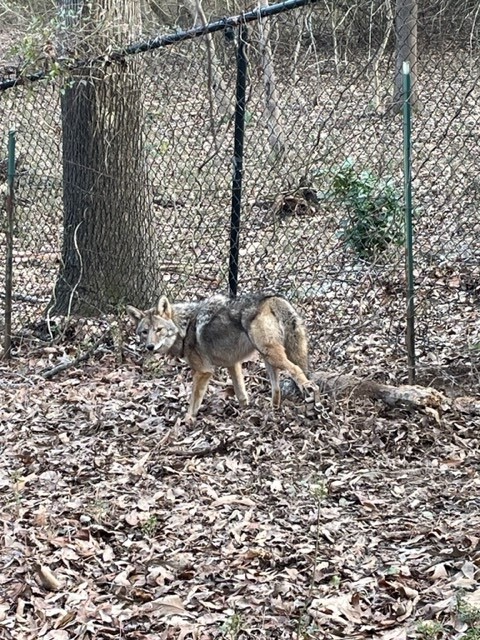It’s easy to understand why homeowners are often startled by coyote sounds in the middle of the night because the pests emit powerful howls and strange yips. These noises are used to communicate various commands, thoughts, and emotions to other pack members. Females make huffing and snarling sounds to quietly call for pups, while yelps are used to compliment or denounce each other. Barking often indicates a threat and can be followed by squealing.

Coyote Sounds in the City
The most distinct sounds made by coyotes are their spine-chilling howls, often performed in unison along with others in the pack. This racket is especially prevalent in the beginning of the year when the animals are searching for mates. Howling also peaks in the fall, when mothers are constantly rounding up their curious offspring.
If coyote sounds are loud and occur frequently, a pack is probably living nearby. If this is the case, keep a close eye on cats and dogs, as small pets are favorable prey. The vicious pests will also invade lawns containing open pet food dishes, compost piles, and vegetable gardens. When needed, their keen intelligence is put to use by climbing over, chewing through, and digging underneath fencing.
Signs of Coyotes in Cities
Since coyotes are usually elusive, the presence of their droppings is often the first evidence that an infestation is nearby. As they grow accustomed to an area, the pests can become emboldened and increasingly bothersome to humans and pets. This makes early identification an important part of controlling populations. Knowing what coyote droppings look like can prevent in-person clashes later on by giving residents time to prepare.
Coyote Droppings
Coyote droppings, also called scat, can vary in size and composition. Generally, their feces are several inches long, the diameter of a cigar, and tapered at the end. As coyotes eat small animals, birds, and insects, excrement will contain bits of bone, feathers, fur, and insect exoskeletons. Scat color typically ranges from dark black to gray, depending on the pest’s diet. Poop produced on a meat diet is runny and black, while a fruit diet leads to crumbly stool. Furthermore, coyote droppings turn light gray color when bleached by the sun.
Urban Coyote Diets
Coyotes are omnivores and adapt their diet to their environment. In urban areas, these animals often hunt from sundown to sunrise. This may lead residents to wonder if coyotes are nocturnal. In their natural habitats, away from noise and people, coyotes are often active during the day. Near homes and yards, a coyote will hunt in daylight only when food is hard to find.
When coyotes are active at night, they enter yards with exposed trash, pet food, or fallen fruit. Rodents also attract the animals. In addition, coyotes view some pets and livestock, like caged rabbits and chickens, as prey.
Are Coyotes Nocturnal?
To avoid people, coyotes often retreat from towns once they finish hunting. However, it is not uncommon for packs to live in urban areas with plenty of food sources. Among buildings, dense brush, and culverts, a coyote has many places to hide
Although it may seem like coyotes are nocturnal, this behavior results from human activity. Regardless of the time of day, residents should keep pets outside under careful watch and secure livestock in sturdy pens. For exclusion or removal support when coyotes are active, call the team at Trutech.
Urban Coyote Problems
The behavior pattern of coyotes that live in areas populated by people is remarkably consistent. If their presence is not challenged, they eventually begin coming out in the daytime, attacking leashed pets, stalking children’s play areas, and engaging with adults. Clearly, this is not acceptable and points to the importance of coyote droppings identification. By getting an early warning, residents can take appropriate steps to limit and control coyote populations. The wildlife professionals at Trutech have the necessary experience to put fears at ease and keep coyotes in their place.
What Cities Are Coyotes In?
Coyotes are found throughout the United States and thrive in cities like Richmond, Dallas–Fort Worth, San Antonio, Chicago, Raleigh-Durham-Chapel Hill, and Minnesota.


